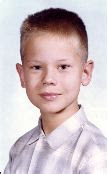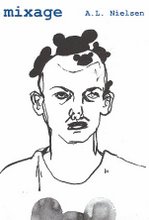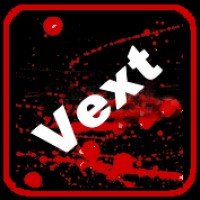Saturday, February 21, 2015
E. Ethelbert Miller - The Aldon Nielsen Project - NOTES INSIDE A POET’S HORN
Q. Can you provide a short list of some of the best jazz poems written by American poets?
What makes a good jazz poem? How do we move beyond the process of "naming" and calling a poem a jazz poem because it simply includes the name of a jazz artist?
On one of the occasions when Robert Creeley was asked what he and Charles Olson had in common as poets, he answered with one word, “Bird.”
If you look to a collection like the Kevin Young edited Jazz Poems in the “Everyman’s Library Pocket Poets” series [and why doesn’t the “pocket poets” book contain a single mention of that great player of the pocket trumpet, Donald Cherry?], you’ll find that all but a tiny few of the poems in the volume explicitly mention a jazz musician or a particular jazz composition. And so, for example, Young includes the early Creeley poem “Chasing the Bird,” – interestingly enough, it is a poem most would not have thought to term a “jazz poem” had it not been for the title. (Though one song title appears as a line in the poem, that title is more often associated with Sonny Stitt than with Bird, but maybe that’s why the title is there – Sonny was chasing the bird.)
But this is a question I’ve been hearing in one form or another for nearly four decades. I remember hearing a poet reading at the Washington Writers Center in Glen Echo, Maryland (now in Bethesda – don’t think it was ever in Washington – maybe that’s why “Washington” isn’t part of the name these days), complain that too many poets thought they had written a jazz poem because they had mentioned a musician – that he, unlike them, was doing it the right way. Here’s an example of him doing it right:
Listening to hard bop,
I stayed up all night
Just like good times.
I broke the old waxes
After I’d played them:
Out of Nowhere, Mohawk,
Star Eyes, Salt Peanuts . . .
That was Paul Zimmer (he has a piece in the Young collection too), and while the poem has him literally breaking the mold, I had a hard time seeing the contrast he was claiming. Fast forward a few decades and I find myself hearing the same complaint and claims from the Irish poet Micheal O’Siadhail, author of the book Hail! Madam Jazz, and again, the poems made much mention of musicians and songs. (And the poet insisted on keeping his audience in the dark – the room lights were extinguished while he read under a lamp light on the podium, resulting in that same effect we’d get when, as children, we’d hold a flashlight under our chin.) I was again hard pressed to hear anything especially jazzy in the poetry, though I had to give the poet credit for sneaking the last syllable of his name into the title of his book. This is clearly not just a white poet thing. The opening lines of Kevin Young’s “Stardust” read:
Lady sings
the blues
the reds, whatever
she can find–
short
changed, a chord–
God bless
the child
that’s got his own
Among the usual elements, a drug reference – extra credit from the workshop for the enjambed “short / changed” in short lines giving short shrift to a chord change – To Young’s credit, his anthology does include things like Norman Pritchard’s “Gyre’s Galax,” which you can hear Pritchard chanting on the 1967 LP New Jazz Poets. That’s a poem that approaches the idea via sound structures rather than content.
I am as guilty/creditable as anybody else on this score. Here’s a short-lined poem on the occasion of the death of Miles Davis:
Still in the ear
All these years
From first hearing
To this news
Miles
Whose blues
Inhere
In rests
I think of this structure as a little horn, almost a pocket trumpet. It works with sound as much as sense. It alludes to Miles’s famous rests, now become permanent, “In a Silent Way,” without naming that tune. Early poems of mine invoke, sometimes obliquely, Sonny Rollins, Charles Mingus, J.P. Johnson, and so on, in the tradition of so many of my fellow poets of mentioning the music in the process of writing of it. One person said writing about music is like dancing about architecture – another said words don’t go there – in both instances, these become epigrams that we repeat to one another that really don’t do anything more than excuse us from thinking more carefully about the musics of writing.
I suppose some close reader might posit direct formal linkages between the structures of Creeley’s and Olson’s poems and Charlie Parker’s music, much as a few critics continue to scan Williams’s variable feet and insist they can really be counted. I don’t see it. Still – In the chapter of my book Writing between the Lines titled “Whose Blues?” (that title written before I used the line in a poem - in the chapter the phrase is a question – in the poem it is a possessive) I argued that Williams and Kerouac had precious little technical knowledge about the jazz that so moved them; that we should not expect to find demonstrable jazz analogues in their works. But there is absolutely no doubting that jazz helped to form their writing. Kerouac’s “spontaneous Bop prosody” is a metaphor become a practice.
If we want to see what I would consider jazz poetry that isn’t such purely by virtue of its subject matter, we can look to the poetry of Cecil Taylor. This might seem an evasion, since Taylor is himself a jazz musician (one whose poems hold considerably more interest for me than do those of most jazz musicians who write verse – he’s one of the exceptions, along with Joseph Jarman and, so I hear, Herbie Nichols).
fruit happy to the water know
pleasant prick of tongues identities
forage gather’d dentures elastic
response call juices
Though Taylor can allude with the best of them:
Remember T. Dameron
know tender things un-
tamper’d by populous
ne-be hebetudes, tides
overwhelm, ultimatum
I tried not to devote much time to the question of definition when I wrote about jazz and poetry in Black Chant. (And let’s face it, while I absolutely did want to write those chapters, it was a way a still precariously situated literary professor could write about music without catching flack from a dean or department head.) In Sascha Feinstein’s book Jazz Poetry from the 1920s to the Present, published in the same year as Black Chant, Feinstein recounts the experience of a conference panel that tied itself in knots over the question of what constitutes jazz poetry. In Understanding the New Black Poetry, Stephen Henderson arrived at the most commonsensical of definitions of Black verse. Any poem written by any Black poet is a Black poem, and so is any poem written by a non-Black person which is read as a Black poem by Black people. Feinstein arrives at a similarly plain-spoken and workable definition. “A jazz poem is any poem that has been informed by jazz music.” Notice this is restricted to matters of definition, not judgments of value or quality. So many writers attempting to define jazz poetry invoke rhythm, though it’s clear to me from looking at jazz poems they praise that they have a quite different sense of rhythm from my own. It all reminds me just a tad too much of jazz critics who declare that it isn’t jazz if it doesn’t swing, which might have been an acceptable take on an Ellingtonian imperative were it not for the fact that “swing” is every bit as difficult of definition as anything else in this discussion.
There are poems that take the actual sounds and rhythms of a known jazz work as their structure. Paul Blackburn’s “Listening to Sonny Rollins at the Five Spot” is a clear example of that approach, which is probably why the poem appears in nearly every jazz poetry anthology extant. I’d like to insist that Jayne Cortez’s “What’s Your Take?” is a jazz poem, and apparently she shared my view since she included that poem in Jazz Fan Looks Back.
If the most extravagant treaty of abuse
sits like an occupying force on
broken body of an abandoned child
I think it would be hard to argue for this as an example of “swing,” but Cortez was perfectly capable of swinging it in performance. Turning to the issue of Brilliant Corners where my little Miles first appeared, I have a hard time seeing anything of jazz in Billy Collins’s
and every time we kiss
I feel
reissued on Impulse
reissued on Verve.
Sorry, but that’s just corny and obvious. And risking sacrilege, I’d say much the same of the late Philip Levine’s poem about Sonny Rollins, “The Unknowable.”
After all–a man who stared for years
into the breathy, unknowable voice
of silence and captured the music.
You can almost hear the audience greeting these closing lines with a communal sigh at the depth of it all. But “voice / of silence”? That’s a freshman poetry error. I know because I made a similar error in a poem published when I was a freshman. (More about that in a later post.) I might say my own Sonny Rollins poem is much better, but I would, wouldn’t I? All of our poems seem smaller next to the works Jayne Cortez published in that same issue, poems like “States of Motion” and “Bumblebee, You Saw Big Mama.” But I wouldn’t refuse the definition of “jazz poem” to any of those poems. I’m content with defining the genre as “any poem written under the sign of jazz.” Once we agree on that breadth we can go on to talk about how the poems work, how they signify, how we interact with them.
At the time I wrote Black Chant there was very little work available on jazz and poetry. In addition to Feinstein’s book, we now have Notes to Make the Sound Come Right, by T.J. Anderson III, Tony Bolden’s Afro-Blue: Improvisations in African American Poetry and Culture, Meta Jones’s The Muse Is Music, and Michael New’s dissertation, Instrumental Voices. (Watch for his Gil Scott Heron chapter, forthcoming in Callaloo.) More people in literature need to read George Lewis’s A Power Greater than Itself, which has as much to teach us about poetics as about music.
And the anthologies just keep coming. There was Feinstein’s two volume set co-edited with Yusef Komunyakaa, The Jazz Poetry Anthology and Second Set. Art Lange and Nathaniel Mackey edited what for my money remains the best overall collection, Moment’s Notice. More recently there is Experiments in A Jazz Aesthetic.
So, any list would go on longer than a Cecil Taylor solo concert. I would, though, send readers to such work as Fred Moten’s The Feel Trio, which is written next to speakers playing Taylor’s music. And do check out Moten’s new one, The Little Edges.
that’s what rodney asked about,
can you make what we already (do
you remember/how did the people)
have? Let it get around and get on in.
I’d give a listen to Vijay Iyer’s work with Mike Ladd and his performances with Amiri Baraka, who remains a consummate jazz poet. Matana Roberts’s experiments with texts in her Coin Coin trilogy are wondrous. After you read Harmony Holiday’s Negro League Baseball give the enclosed CD a spin. It’s not your usual recorded reading of the book’s poems. And I will repeat; you must listen to Georgia Anne Muldrew’s Olesi: Fragments of an Earth.
Subscribe to:
Post Comments (Atom)

























No comments:
Post a Comment